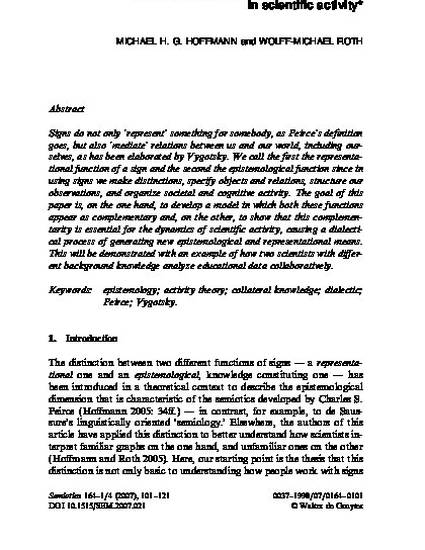
Article
The complementarity of a representational and an epistemological function of signs in scientific activity
Semiotica
(2007)
Abstract
Signs do not only “represent” something for somebody, as Peirce’s definition goes, but also “mediate” relations between us and our world, including ourselves, as has been elaborated by Vygotsky. We call the first the representational function of a sign and the second the epistemological function since in using signs we make distinctions, specify objects and relations, structure our observations, and organize societal and cognitive activity. The goal of this paper is, on the one hand, to develop a model in which both these functions appear as complementary and, on the other, to show that this complementarity is essential for the dynamics of scientific activity, causing a dialectical process of generating new epistemological and representational means. This will be demonstrated with an example of how two scientists with different background knowledge analyze educational data collaboratively.
Disciplines
- Communication Technology and New Media,
- Critical and Cultural Studies,
- Curriculum and Instruction,
- Environmental Policy,
- Epistemology,
- Ethics and Political Philosophy,
- International and Intercultural Communication,
- Logic and Foundations of Mathematics,
- Peace and Conflict Studies,
- Philosophy of Science,
- Policy Design, Analysis, and Evaluation,
- Public Policy and
- Science and Mathematics Education
Publication Date
2007
Citation Information
Michael H.G. Hoffmann and Wolff-Michael Roth. "The complementarity of a representational and an epistemological function of signs in scientific activity" Semiotica Vol. 164 Iss. 1/4 (2007) Available at: http://works.bepress.com/michael_hoffmann/17/
